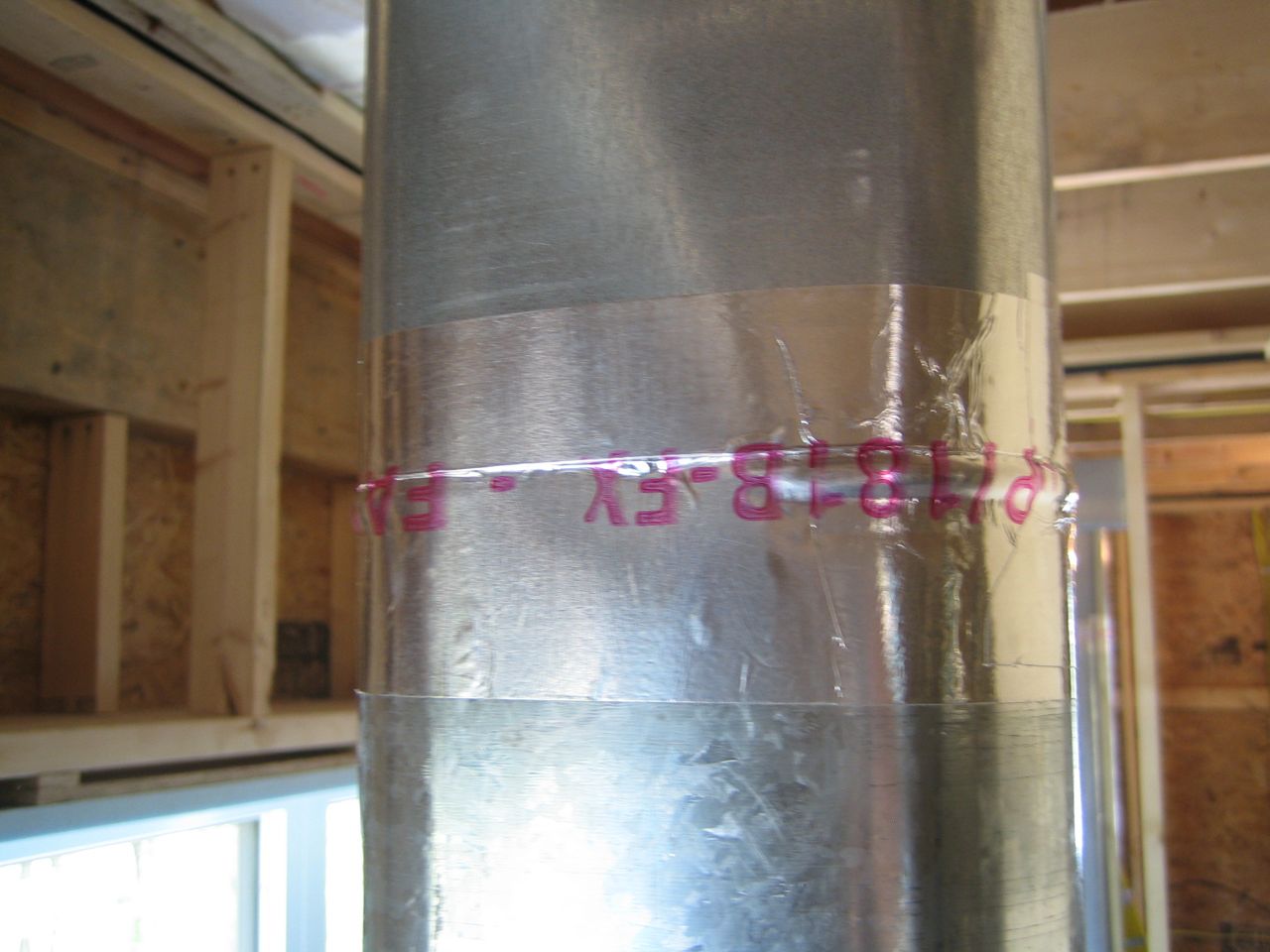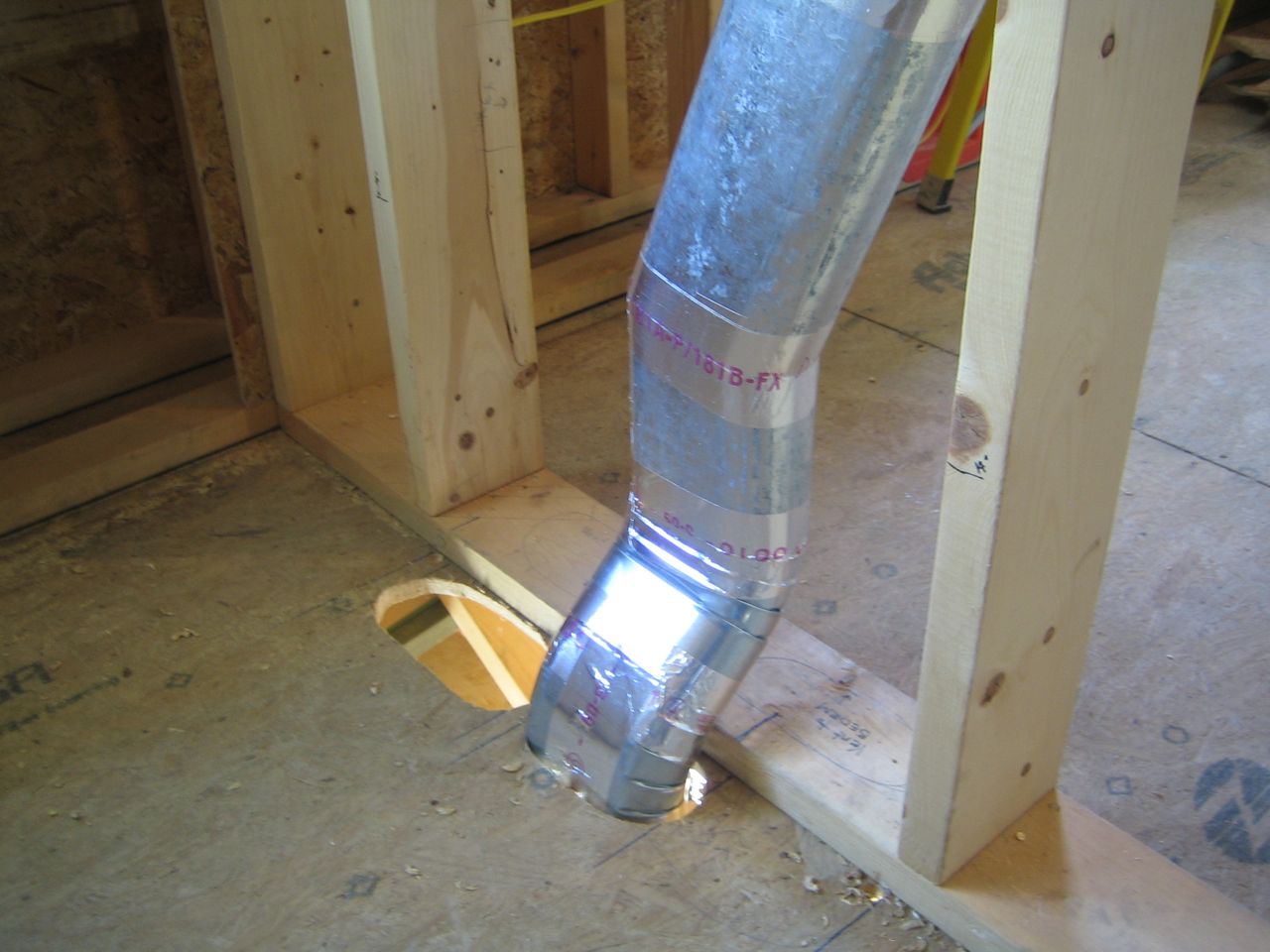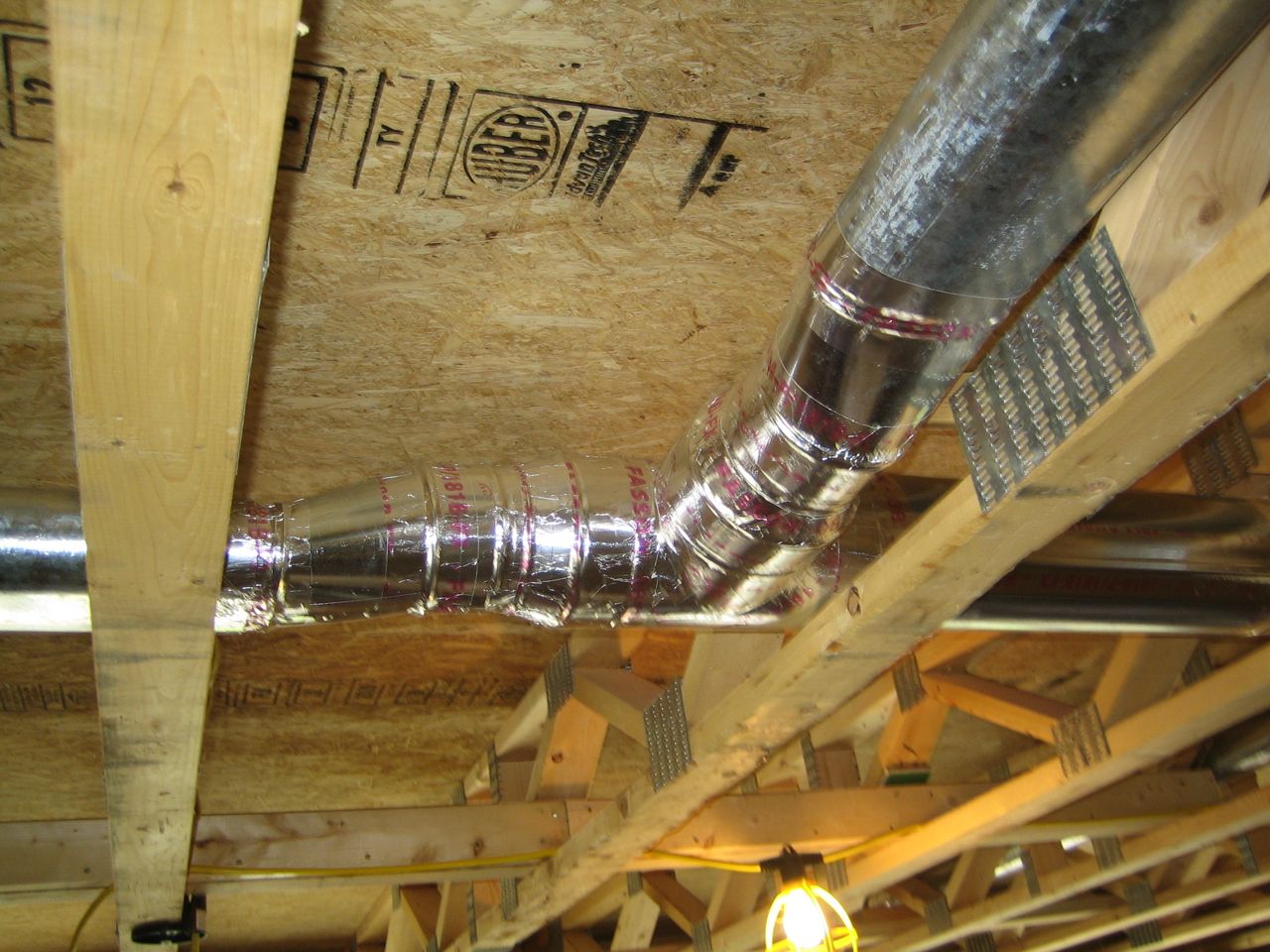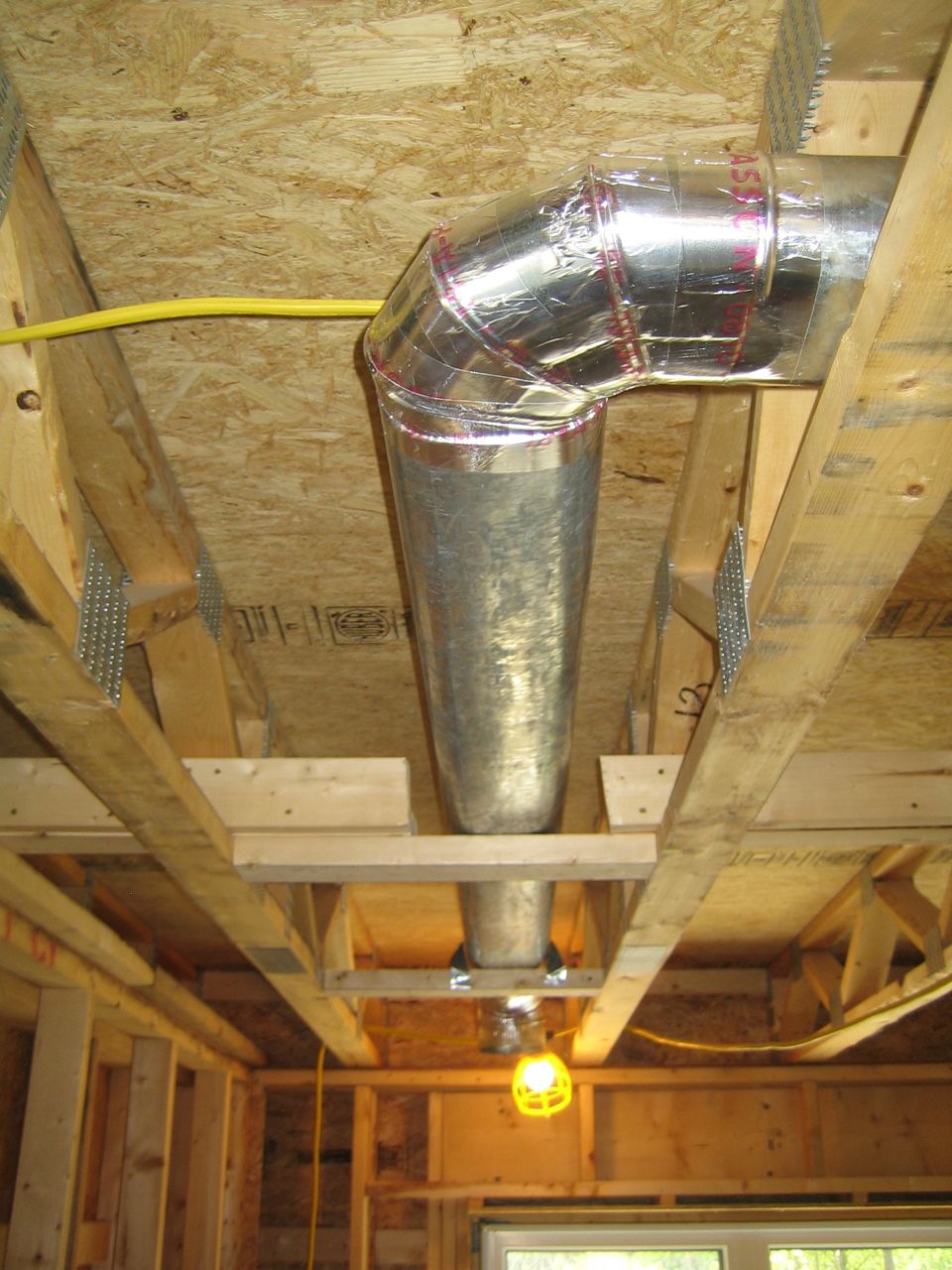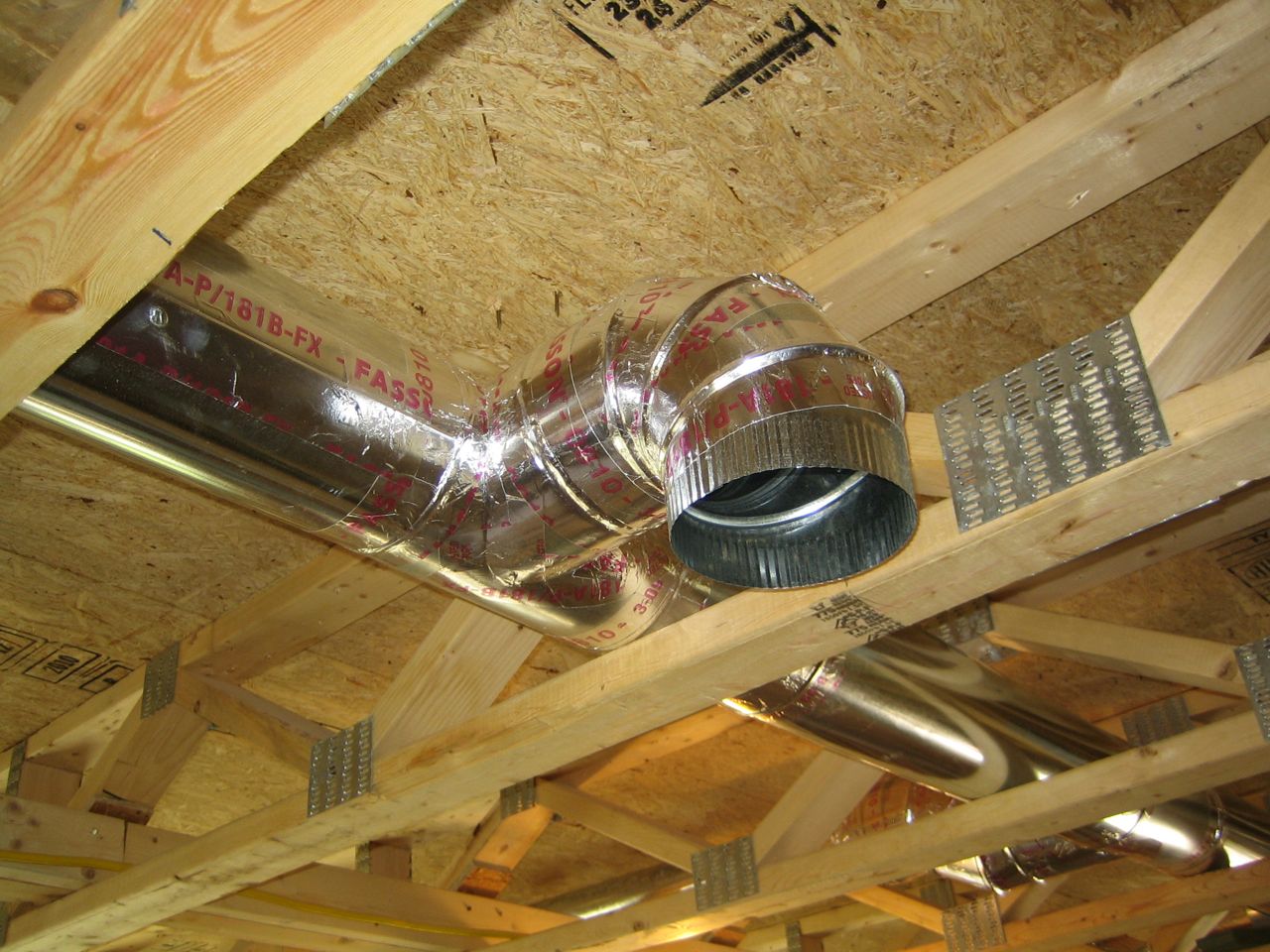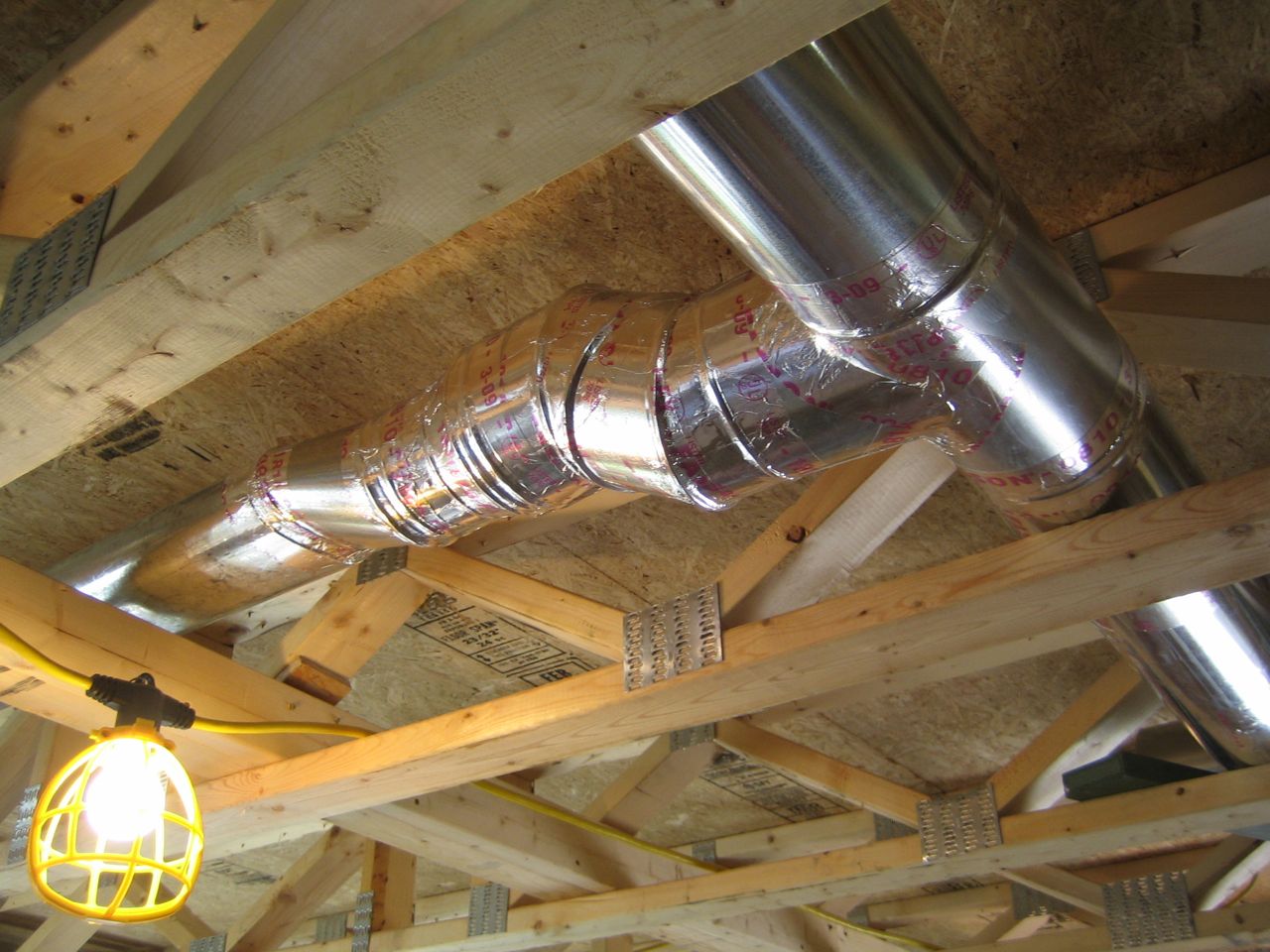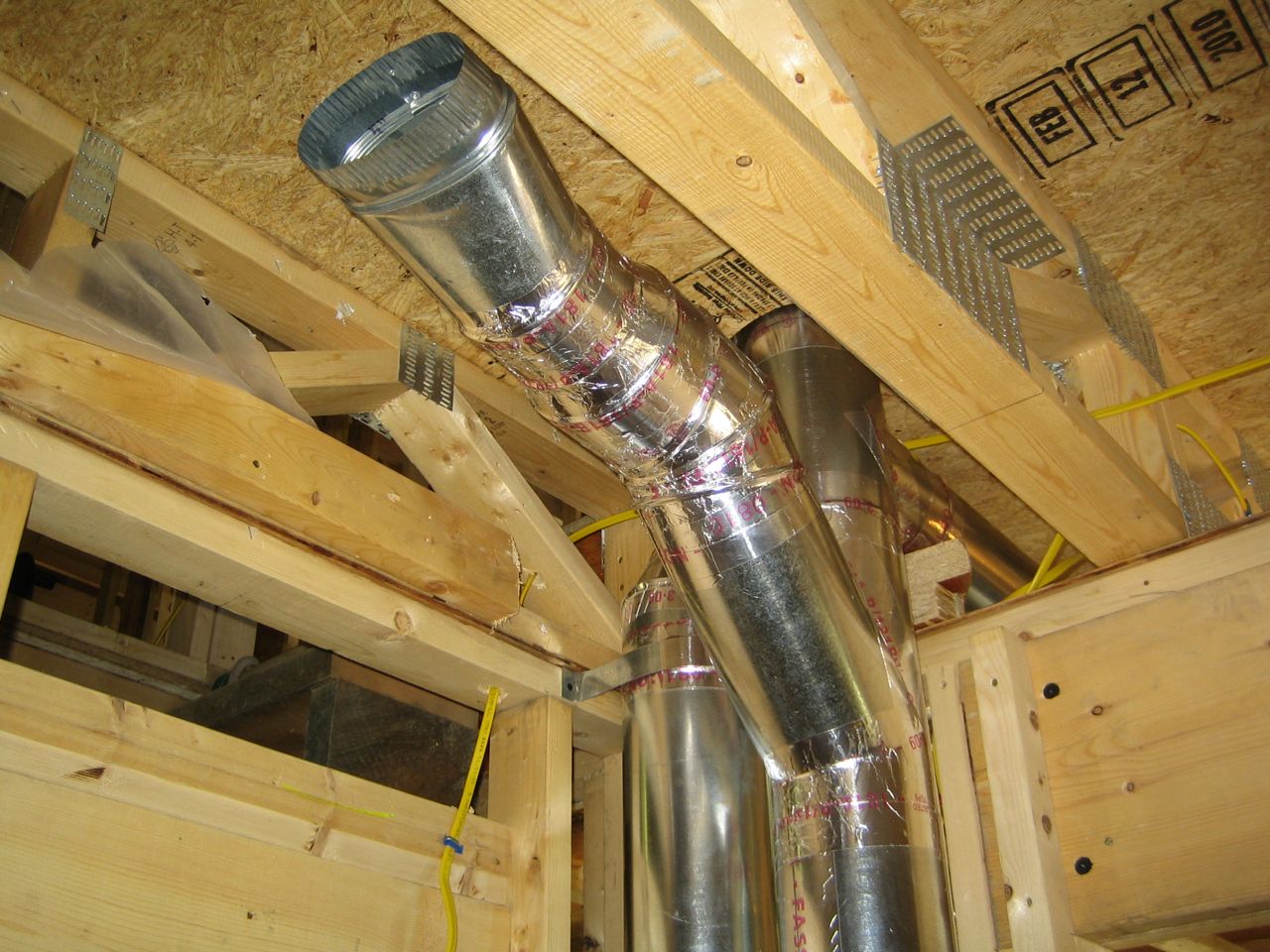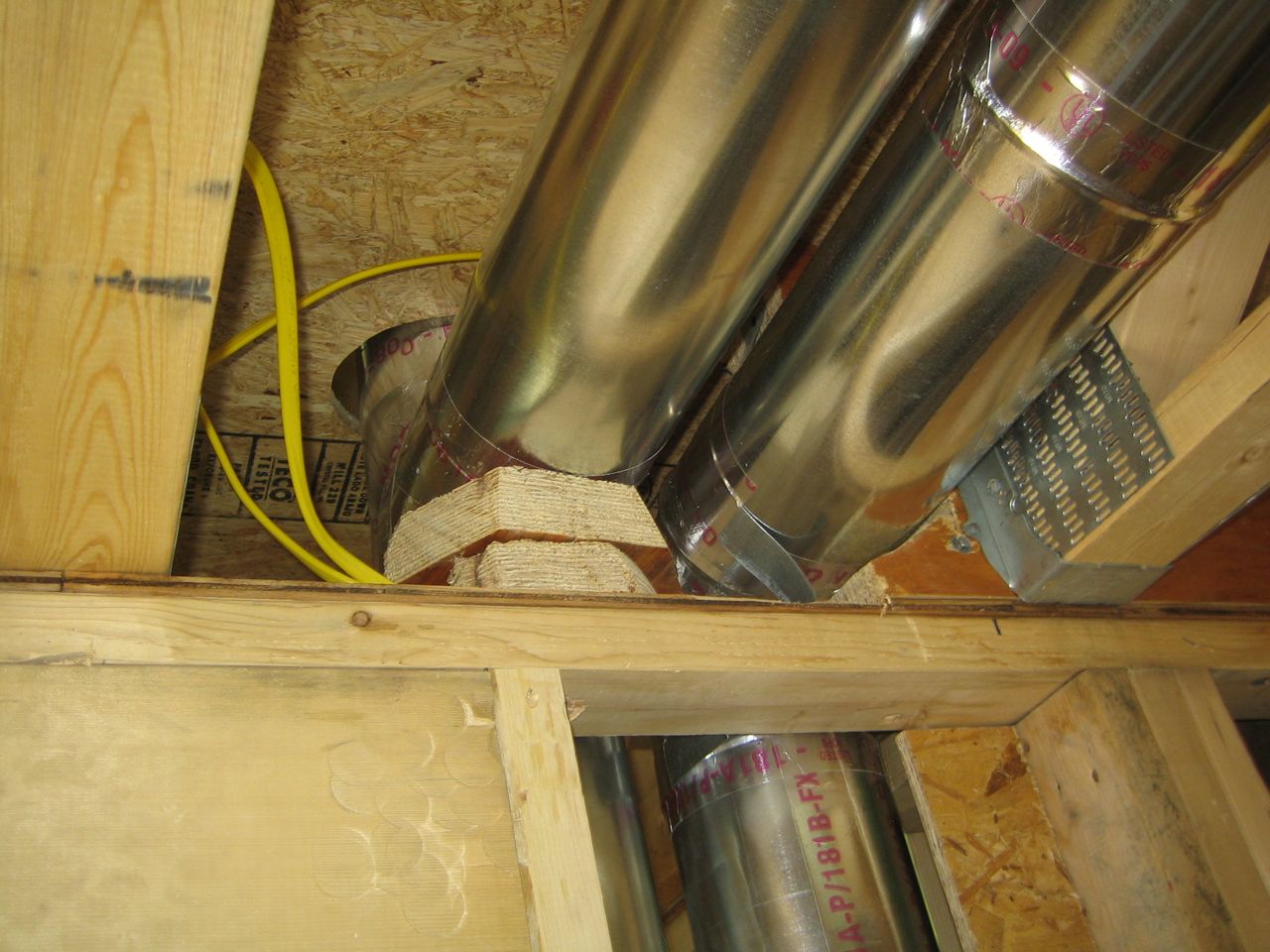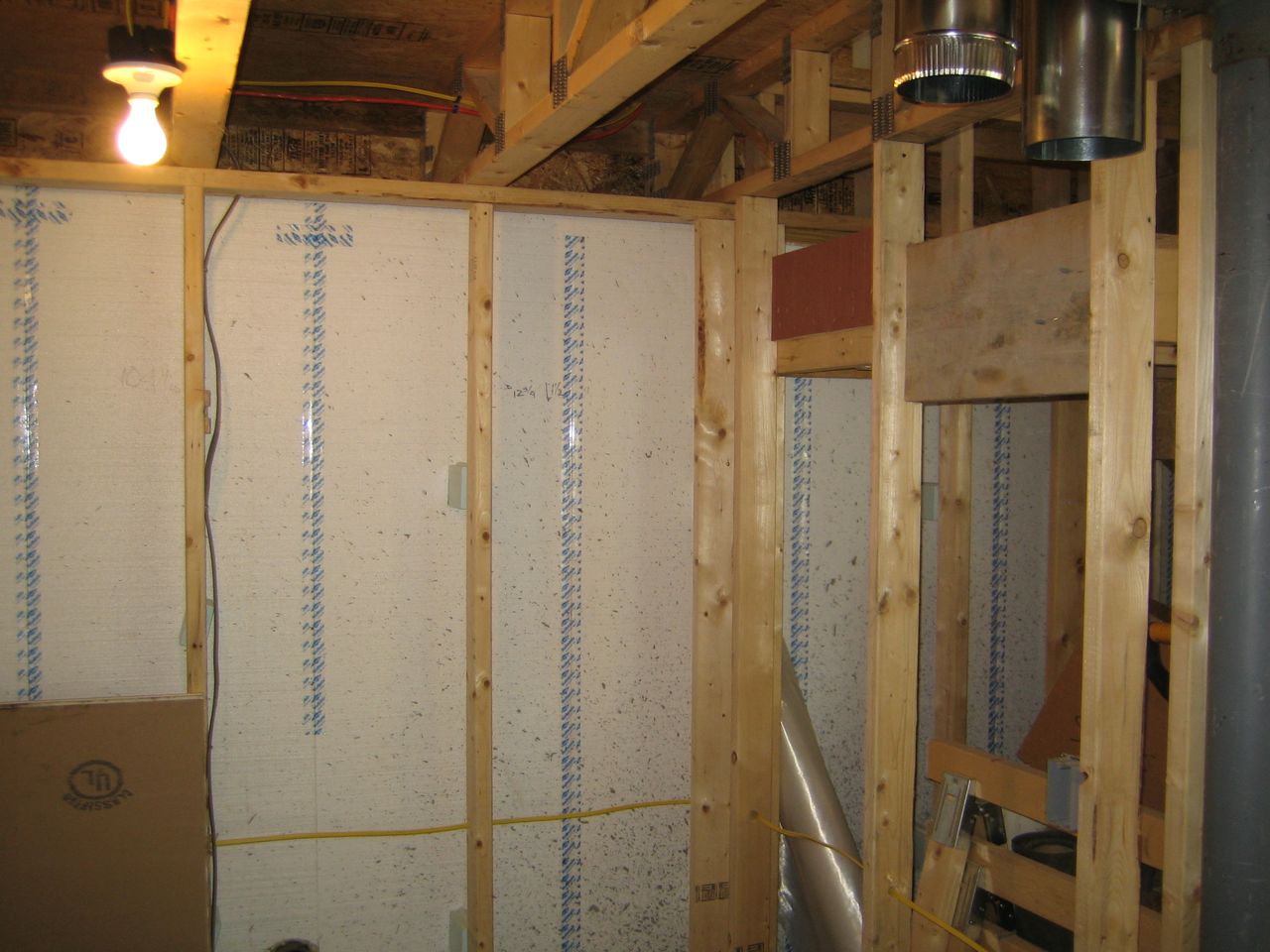Mechanicals rough-in
Our mechanicals contractor started roughing in the duct work for the ventilation system last week. If you recall my earlier post, Mechanicals (ERV and ASHP), I tried to model all the ducting to anticipate the problem areas.
Our installer, Phil, has been installing ventilators and air-source heat pumps for quite some time, and he has brought a lot of experience to the table. This will be essential in some of the tricky spots. Out of the four areas I was originally worried about, only one has Phil mildly stumped; connecting the outside air ducts to the ERV.
Determining how to orient and position the ERV in the basement in order to minimize the number of twists and turns is a real challenge. I don’t think we’ll actually know the final configuration until the unit arrives in a few weeks.
I’ve also been a bit concerned about the number of T connections that Phil has been using. My research has led me to believe that these should be Y connections. T connections impede the flow of air. Phil assures me that this is not an issue considering the relatively low air pressure in the system. I remain skeptical, but relented as long as the required air flow at each register can be achieved.
Lessons learned: I should have located the ventilator somewhere on the first or second floors instead of the basement. This would have greatly simplified connecting to the outdoors, although it would have brought the unit closer to the living spaces and potentially caused a noise or vibration problem.
I also should have moved a few walls so that they did not sit directly on top of a truss. Trusses are wider (3.5”) than normal joists (1.5”). This makes it extremely difficult to get vents and plumbing stacks up through these walls without some gymnastics.
I’ll add more details when the ERV unit arrives onsite.

Categories
- Air sealing 13
- Appliances & Fixtures 4
- Art 3
- Award 4
- Bathroom 8
- Batteries 1
- Decor 5
- Design 10
- Electrical 5
- Energy Calculations 13
- Energy Monitors 4
- Farm 1
- Finance 1
- Flooring 3
- Foundation 9
- Framing 8
- Heating 9
- House 7
- Insulation 8
- Kitchen 6
- Landscaping 3
- Lessons Learned 1
- Performance 60
- Plumbing 10
- Porch 5
- Radon 1
- Rainwater catchment 3
- Research / study 1
- Roof 7
- Septic / Waste water 2
- Sheetrock 6
- Siding 9
- Site Work 22
- Smart home 1
- Solar 64
- Solar Obsessed 10
- Stairs 2
- Surveying 3
- Ventilation 8
- Weather 1
- Windows & Doors 14
- plug-in 3
Archive
- Jan 2021 1
- Dec 2020 2
- May 2020 1
- Jan 2020 1
- May 2019 1
- Jan 2019 3
- Sep 2018 2
- Aug 2018 2
- Jan 2018 1
- Oct 2017 2
- Apr 2017 1
- Jan 2017 1
- Oct 2016 2
- Aug 2016 1
- Apr 2016 2
- Jan 2016 2
- Nov 2015 2
- Oct 2015 1
- Jul 2015 1
- May 2015 1
- Apr 2015 1
- Jan 2015 1
- Dec 2014 1
- Nov 2014 2
- Oct 2014 4
- Sep 2014 2
- Aug 2014 1
- Jul 2014 1
- Mar 2014 3
- Feb 2014 2
- Jan 2014 2
- Nov 2013 1
- Oct 2013 1
- Sep 2013 1
- Jul 2013 3
- Apr 2013 3
- Jan 2013 3
- Dec 2012 2
- Nov 2012 3
- Oct 2012 1
- Sep 2012 3
- Aug 2012 3
- Jul 2012 2
- Jun 2012 1
- May 2012 3
- Apr 2012 2
- Mar 2012 4
- Feb 2012 4
- Jan 2012 5
- Dec 2011 4
- Nov 2011 9
- Oct 2011 10
- Sep 2011 9
- Aug 2011 6
- Jul 2011 6
- Jun 2011 12
- May 2011 8
- Apr 2011 4
- Mar 2011 5
- Jan 2011 6
- Dec 2010 9
- Nov 2010 3
- Oct 2010 4
- Sep 2010 6
- Aug 2010 8
- Jul 2010 6
- Jun 2010 3
- May 2010 3
- Apr 2010 1
- Mar 2010 3
- Feb 2010 3
- Dec 2009 1
- Jun 2009 1
- May 2009 1
- Feb 2009 1
- Dec 2008 1
- Nov 2008 1
- Jun 2008 1


